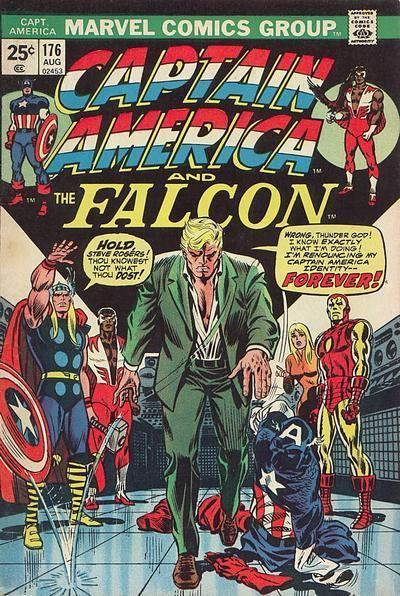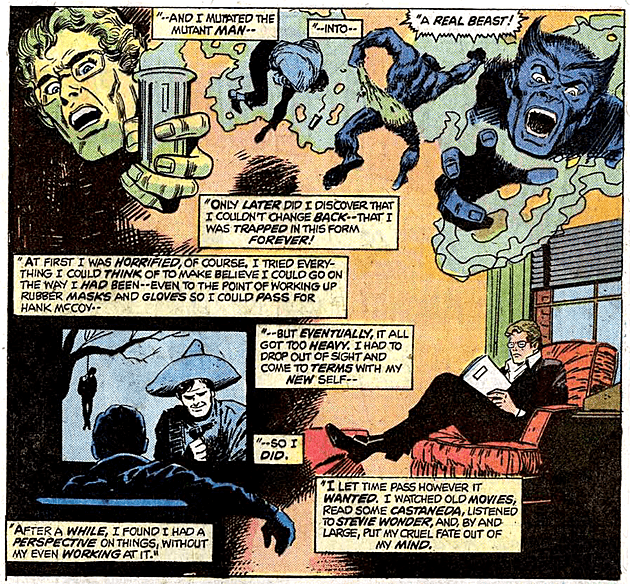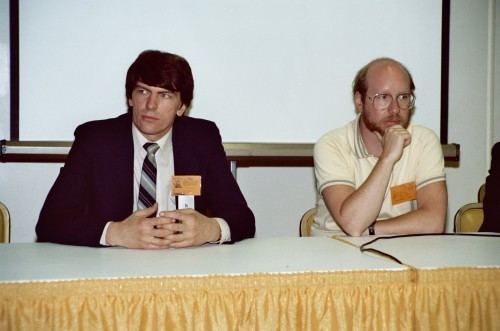Nationality American Role Writer | Name Steve Englehart Area(s) Writer Movies The Hands of Shang-Chi | |
 | ||
Born April 22, 1947 (age 78) ( 1947-04-22 ) Pseudonym(s) John HarknessCliff Garnett Notable works The AvengersCaptain AmericaDetective ComicsDoctor StrangeGreen LanternJustice League of America Awards Eagle Awards Roll of Honour, 1978Inkpot Award, 1979 Spouse Marie-Therese (Terry) Beach (m. 1975) Children Eric Englehart, Alex Englehart Books Batman Dark Detective, Batman: A Celebration of 75 Years, The Plain Man, Batman: Strange Apparitions, The Arena Man Similar People | ||
Legendary Marvel & DC Comics Writer Steve Englehart - Toronto ComiCon 2019
Steve Englehart (born April 22, 1947) is an American writer of comic books and novels. He is best known for his work at Marvel Comics and DC Comics in the 1970s and 1980s. His pseudonyms have included John Harkness and Cliff Garnett.
Contents
- Legendary Marvel DC Comics Writer Steve Englehart Toronto ComiCon 2019
- Blastoff at sdcc 2012 steve englehart
- Early life
- Marvel Comics
- DC Comics
- Return to Marvel
- Other work
- Novels
- Personal life
- Awards
- References

Blastoff at sdcc 2012 steve englehart
Early life

Steve Englehart majored in psychology at Wesleyan University, where he was a member of The Kappa Alpha Society, earning his Bachelor of Arts degree in 1969.
Marvel Comics

Englehart's first work in comics was as an art assistant to Neal Adams on a 10-page story by writer Denny O'Neil in Warren Publishing's black-and-white horror comics magazine Vampirella #10 (March 1971). After briefly serving as a member of the Crusty Bunkers, Englehart found his true calling as a writer. He began with a co-writing credit, with Gardner Fox, on the six-page, Englehart-drawn "Retribution" in Warren's Eerie #35 (Sept. 1971). Then, as Marvel editor Roy Thomas said in a 2007 interview, Englehart became

...a summer replacement or some such for [writer] Gary Friedrich. When Gary wanted to go away for a while, he got Steve, who was sort of a young aspiring artist when he came up to Neal [Adams]'s studio, and he ended up at Marvel as a proofreader. Then he wanted to write, and I believe he wrote a few pages of a sample script. Anyway, I gave him "The Beast" [in Amazing Adventures] to try out on, and that worked out pretty well.

Englehart said he had first done uncredited co-scripting on a number of stories:

When Gary Friedrich's Sgt. Fury #94 came in, de facto editor-in-chief Roy Thomas wanted major revisions in the script and had me do them. Evidently he liked the result, because right after that, Gary turned back a job he'd been holding onto - dialoguing a little story plotted by Al Hewetson - and Roy asked me to script it from scratch. That was [the seven-page] "Terror of the Pterodactyl" [drawn by Syd Shores, in Monsters on the Prowl #15 (Feb. 1972)] and my first credited job.... Over the next six months, even as my credited stories began to appear, I continued to do uncredited collaborations - sometimes by design and sometimes at the last minute."

This uncredited work included Friedrich's Sgt. Fury and his Howling Commandos #97, Iron Man #45, and The Incredible Hulk vol. 2, #152, plus two romance comics stories and a Western tale. Englehart then wrote two romance stories under the pseudonym Anne Spencer, in Our Love #18 (Aug. 1972) and My Love #19 (Sept. 1972), and, under his own name, a standalone supernatural story in the anthology Journey into Mystery vol. 2, #1 (Oct. 1972)
During his first credited superhero work, on a series starring erstwhile X-Men member the Beast in Amazing Adventures vol. 2, #12-17 (May 1972 - March 1973), Englehart integrated the Patsy Walker character, the star of a teen romantic-comedy series into the Marvel Universe alongside the company's superheroes. He and artist Sal Buscema launched The Defenders as an ongoing series in August 1972 and introduced the Valkyrie to the team in issue #4 (Feb. 1973). Englehart has stated that he added the Valkyrie to the Defenders "to provide some texture to the group."
He wrote The Avengers from issue #105 (Nov. 1972) to #152 (Oct. 1976). During his time on that title, he wrote several major storylines including "The Avengers Defenders War" in issues #115-118 (Sept.-Dec. 1973) and The Defenders #8-11 (Sept.-Dec. 1973); "The Celestial Madonna" in #129-135 (Nov. 1974 - May 1975) and Giant-Size Avengers #2-4 (Nov. 1974 - May 1975); and "The Serpent Crown" in #141-144 (Nov. 1975 - Feb. 1976) and #147-149 (May–July 1976).
In the fall of 1972, Englehart and writers Gerry Conway and Len Wein crafted a metafictional unofficial crossover spanning titles from both major comics companies. Each comic featured Englehart, Conway, and Wein, as well as Wein's first wife Glynis, interacting with Marvel or DC characters at the Rutland Halloween Parade in Rutland, Vermont. Beginning in Amazing Adventures #16 (by Englehart with art by Bob Brown and Frank McLaughlin), the story continued in Justice League of America #103 (by Wein, Dick Dillin and Dick Giordano), and concluded in Thor #207 (by Conway and penciler John Buscema). As Englehart explained in 2010, "It certainly seemed like a radical concept and we knew that we had to be subtle (laughs) and each story had to stand on its own, but we really worked it out. It's really worthwhile to read those stories back to back to back — it didn't matter to us that one was at DC and two were at Marvel — I think it was us being creative, thinking what would be really cool to do."
Englehart had a potent run on Doctor Strange (originally with artist Frank Brunner, later with Gene Colan), in which Strange's mentor, the Ancient One, died, and Strange became the new Sorcerer Supreme. Englehart and Brunner, audaciously, also created a multi-issue storyline in which a sorcerer named Sise-Neg ("Genesis" spelled backward) goes back through history, collecting all magical energies, until he reaches the beginning of the universe, becomes all-powerful and creates it anew, leaving Strange to wonder whether this was, paradoxically, the original creation (Marvel Premiere #14). Editor-in-chief Stan Lee, seeing the issue after publication, ordered Englehart and Brunner to print a retraction saying this was not God but a god, so as to avoid offending religious readers. The writer and artist concocted a fake letter from a fictitious minister praising the story, and mailed it to Marvel from Texas; Marvel unwittingly printed the letter, and dropped the retraction order. Englehart's Doctor Strange #14 featured a crossover story with The Tomb of Dracula #44, another series which was being drawn by Gene Colan at the time. In Englehart's final story for the series, he sent Dr. Strange back in time to meet Benjamin Franklin.
Describing that time, Englehart said in 1998,
We'd rampage around New York City. There was one night when a bunch of us, including Jim Starlin, went out on the town. We partied all day, then did some more acid, then roamed around town until dawn and saw all sorts of amazing things (most of which ended up in Master of Kung Fu, which Jim and I were doing at the time).
Englehart and artist Starlin co-created the character Shang-Chi, Master of Kung Fu, though they only worked on the early issues of the series. Englehart reconciled the existence of Captain America and sidekick Bucky in Marvel's 1950s precursor, Atlas Comics, an anomaly that had been ignored since Captain America's 1964 reintroduction to Marvel after having been in suspended animation since 1945. Englehart's newly retconned history stated that the 1950s Captain America and 1950s Bucky had been different characters. This was followed by an extended storyline of Steve Rogers becoming so profoundly disillusioned with the United States that he temporarily abandoned his Captain America identity to become Nomad until he decided to refocus his purpose as the defender of America's ideals, not necessarily its government. The Englehart/Sal Buscema run on the Captain America title saw the series become one of Marvel's top-sellers. In 2010, Comics Bulletin ranked Englehart's work on Captain America, The Avengers, and Doctor Strange fourth, eighth, and ninth, respectively, on its list of the "Top 10 1970s Marvels".
Following Gerry Conway's elevation to editor-in-chief in March 1976, Englehart had a falling-out with Marvel. He recalled in 2010 that Conway
...was a young guy in those days. He basically said, 'I'm the editor at Marvel. I can do whatever I want to do. I want to write The Avengers and I want to write The Defenders.' So he just took them. He took The Avengers away from me and he took The Defenders away from Steve Gerber. We said, 'This is not the collegial atmosphere that we've all been working under.' I quit. I got into Marvel because of the whole Bullpen, the whole ambience that you could see form the readers' side. When I came in the door, it was exactly like that inside. Marvel was a wonderful place to work. This was a big change, this kind of 'I have power' [mentality].
Conway, who left the editorial post after only "about a month-and-a-half," recalled circumstances differently:
[The Avengers] was perennially late to the printer, which was costing Marvel a lot of money. ... I asked Steve for a commitment to have his next plot for The Avengers in by Friday ... so that, if he didn't make it, I'd have time over the weekend to play a replacement issue. [When the plot did not arrive,] I called him, and he denied he'd ever made any commitment to delivery by Friday — as far as he was concerned, [artist] George [Pérez] didn't need the plot till Monday, so he wasn't going to deliver a plot until Monday. When I told him this wasn't what we'd agreed, so I was going to write a replacement plot myself ... Steve responded [that] a fill-in story would ruin the overall storyline and he accused me of trying to take over the book. He said if I insisted on a doing a fill-in, he'd quit. Well, if I [were] going to have any authority as an editor, I had to do what I said I'd do. ... So Steve quit The Avengers.
DC Comics
Englehart, in fact, planned to quit comics altogether and pursue novels, but DC Comics publisher Jenette Kahn persuaded him to come to DC. His only previous credited work for the company had been scripting the Batman story "Night of the Stalker!" in Detective Comics #439 (Feb.–March 1974). "I said, 'Okay I'll fix Justice League [of America] for you, but I'm only going to do this for a year." To that end, he wrote Justice League of America #139–146 and 149–150, with artist Dick Dillin, and additionally wrote an eight-issue arc of Batman stories in Detective Comics #469–476, with pencilers Walt Simonson and Marshall Rogers. In this arc, he recreated the Batman as a pulp-oriented, dark character; restored the Joker's persona to that of a homicidal maniac; and introduced love interest Silver St. Cloud. Englehart claims this storyline was adapted as the first Batman film in 1989, with Englehart providing uncredited development. The Englehart and Rogers pairing, was described in 2009 by comics writer and historian Robert Greenberger as "one of the greatest" creative teams to work on the Batman character. DC Comics writer and executive Paul Levitz noted that "Arguably fans' best-loved version of Batman in the mid-1970s, writer Steve Englehart and penciller Rogers's Detective run featured an unambiguously homicidal Joker...in noirish, moodily rendered stories that evoked the classic Kane-Robinson era." In their story "The Laughing Fish", the Joker is brazen enough to disfigure fish with a rictus grin, then expects to be granted a federal trademark on them, only to start killing bureaucrats who try to explain that obtaining such a claim on a natural resource is legally impossible. The Detective Comics storyline was reprinted in trade paperback in 1999 as Batman: Strange Apparitions. Englehart and Rogers had a short run on DC's revived Mister Miracle series as well.
His run on Justice League of America included another unofficial crossover between DC and Marvel in issue #142 by reworking his character Mantis into the DC Universe as a character named "Willow". Other contributions to the series were crafting a new origin for the team and the induction of the character Hawkwoman into the team's membership.
Englehart temporarily left comics at this juncture, moving to Europe before his first issue of Detective was published. During this time he wrote a fantasy/occult novel, The Point Man, which was republished in 2010.
A 25-page Englehart-Rogers story featuring Madame Xanadu, originally commissioned for Doorway to Nightmare, sat in inventory for years before being published as the one-shot Madame Xanadu in 1981, in DC's first attempt at marketing comics specifically to the "direct market" of fans and collectors.
Return to Marvel
In 1983, Marvel's creator-owned imprint Epic Comics published Coyote, a series he had earlier created at Eclipse Comics with Rogers, in collaboration with artist Steve Leialoha. Among those he collaborated with on the title was a young Todd McFarlane, whom Englehart hired on the basis of McFarlane's Coyote art samples, which was McFarlane's first comic book work. McFarlane would go on to become one of the industry's most prominent and successful artists and publishers, a toy-company founder, and a Grammy Award- and Emmy Award-winning animator.
Englehart returned to mainstream Marvel comics later that decade with stints on West Coast Avengers, the second Vision and the Scarlet Witch limited series (with artist Richard Howell), Silver Surfer (again with Rogers), and Fantastic Four (during which editorial disputes led to his using the pseudonym John Harkness, a name he had first used on his last issue of Mister Miracle.) Englehart was going to be the regular writer of Daredevil in 1986 but left after only one issue due to an editorial conflict.
Simultaneously, Englehart wrote DC Comics' Green Lantern, overseeing the title's name change to Green Lantern Corps and wrote the DC weekly crossover series Millennium (Jan.-Feb. 1988).
Other work
In 1992, he co-created the Ultraverse comics universe for Malibu Comics and wrote Night Man and the superhero-team series The Strangers. Night Man was later adapted for a syndicated television series (NightMan) which ran for two seasons. Englehart wrote three episodes of the television series.
For Claypool Comics, he wrote the supernatural series Phantom of Fear City #1-12 (May 1993 - May 1995).
Throughout the remainder of the 1990s, he wrote a series of young adult books for Avon, including the DNAgers series (with his wife, Terry) and the Countdown series. Countdown to Flight was selected by NASA for its school curriculum on the Wright Brothers. He also worked in animation, with episodes of Streetfighter and G.I. Joe Extreme, and wrote one of the three episodes in Disney's Atlantis: Milo's Return film.
He wrote a screenplay for an unproduced film, Majorca. The screenplay was published as a book by Black Coat Press. He has admitted to writing the novel Hellstorm in the TALON Force series under the house pseudonym Cliff Garnett.
In the early 2000s, Englehart returned to comics briefly, and in 2005, he reunited with Rogers and Austin on the miniseries Batman: Dark Detective, elements of which were adapted into the Batman film The Dark Knight.
In 2014, the film Guardians of the Galaxy starred his creation, Star-Lord.
Novels
In the mid-2000s, Englehart turned his 1980 novel, The Point Man, into Book Zero for a series concerning its hero, Max August. The first sequel, The Long Man, was published in 2009, The Plain Man in 2011, and The Arena Man in 2013. In the series, Max became immortal in 1985 and is dealing with the consequences two decades later in real time.
Other work
Englehart worked for some time as a professional astrologer, having developed an interest in astrology while working on Doctor Strange.
Personal life
Englehart married Marie-Therese (Terry) Beach in 1975. They have two sons, Alex and Eric.
